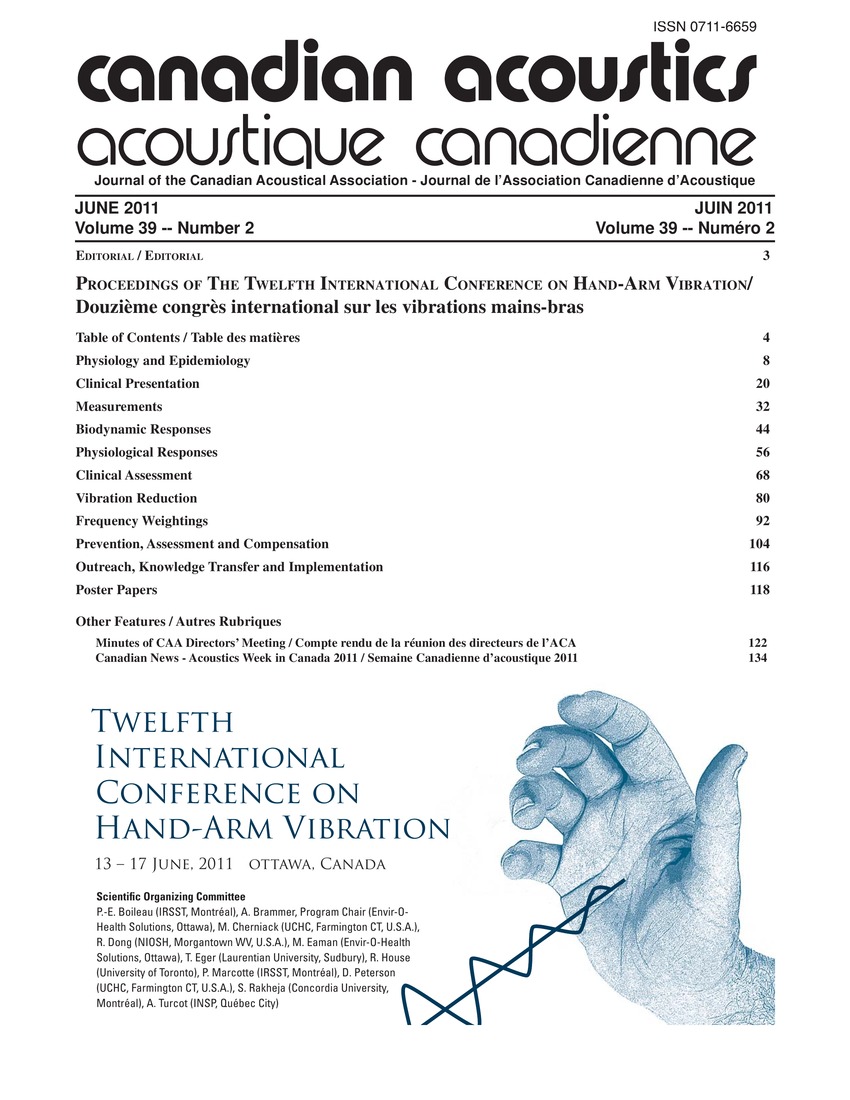Characterization of frequency-dependent responses of sensory nerve function to repetitive vibration
Mots-clés :
Gene expression, Polymerase chain reaction, Rats, Ad libitum, Candidate genes, Different frequency, Frequency-dependent, Peripheral nerves, Quantitative PCR, Sensory nerves, Sprague-Dawley rats, Transcutaneous electrical stimulation, Vibration exposureRésumé
The frequency-dependent effects of repeated vibration exposures on peripheral nerve function and biology were characterized. Male Sprague-Dawley rats were used and were maintained in an AALAC-accredited vivarium under a 12:12 LD cycle with food and water available ad libitum. Fiber functions were assessed using transcutaneous electrical stimulation at 3 different frequencies. Changes in gene expression were measured in the ventral tail nerve and DRG using total rat genome arrays to identify candidate genes and changes were verified using quantitative PCR. The results show no significant changes in the CPTs at 250 or Hz. Between days 1 and 9, there is a significant decrease in the 2000 Hz CPT in rats exposed to vibration at all frequencies. nerves from rats exposed to vibration at 250 Hz displayed a significant reduction in myelin thickness and an increase in the area stained for albumin.Fichiers supplémentaires
Publié-e
Comment citer
Numéro
Rubrique
Licence
Author Licensing Addendum
This Licensing Addendum ("Addendum") is entered into between the undersigned Author(s) and Canadian Acoustics journal published by the Canadian Acoustical Association (hereinafter referred to as the "Publisher"). The Author(s) and the Publisher agree as follows:
-
Retained Rights: The Author(s) retain(s) the following rights:
- The right to reproduce, distribute, and publicly display the Work on the Author's personal website or the website of the Author's institution.
- The right to use the Work in the Author's teaching activities and presentations.
- The right to include the Work in a compilation for the Author's personal use, not for sale.
-
Grant of License: The Author(s) grant(s) to the Publisher a worldwide exclusive license to publish, reproduce, distribute, and display the Work in Canadian Acoustics and any other formats and media deemed appropriate by the Publisher.
-
Attribution: The Publisher agrees to include proper attribution to the Author(s) in all publications and reproductions of the Work.
-
No Conflict: This Addendum is intended to be in harmony with, and not in conflict with, the terms and conditions of the original agreement entered into between the Author(s) and the Publisher.
-
Copyright Clause: Copyright on articles is held by the Author(s). The corresponding Author has the right to grant on behalf of all Authors and does grant on behalf of all Authors, a worldwide exclusive license to the Publisher and its licensees in perpetuity, in all forms, formats, and media (whether known now or created in the future), including but not limited to the rights to publish, reproduce, distribute, display, store, translate, create adaptations, reprints, include within collections, and create summaries, extracts, and/or abstracts of the Contribution.


